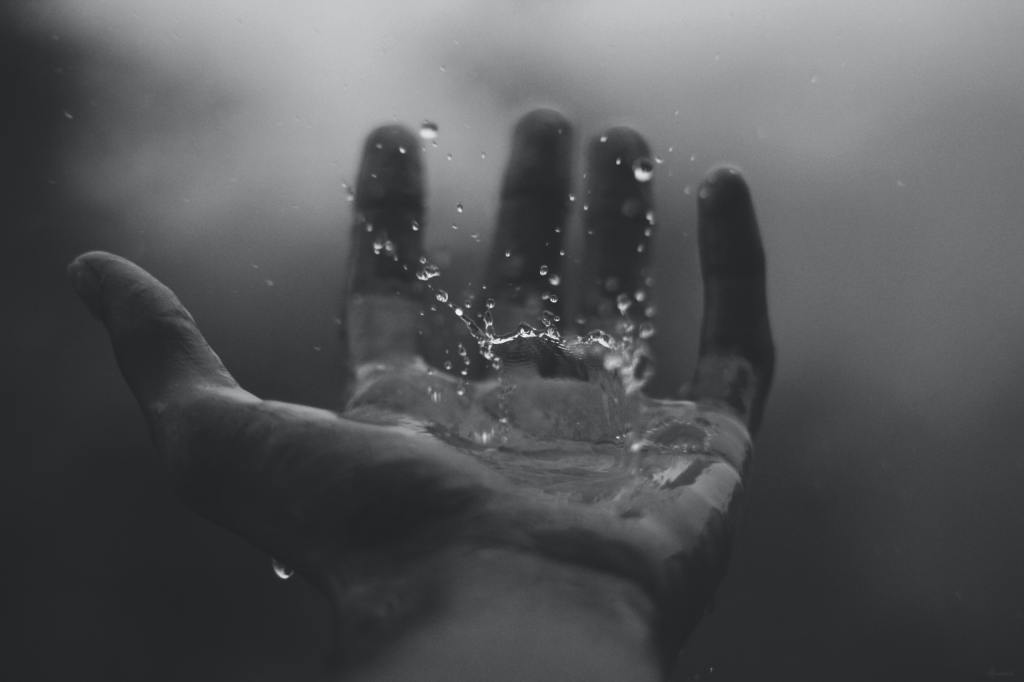使用Player FM应用程序离线!
Episode 73 The structure of selfhood
Manage episode 324169488 series 1105768

How is language like water? Both are all around us. Both are within us. Both have fascinating structuring mechanisms that we may not know much about.
Think about the structure of a water molecule. Its single oxygen atom has a slightly negative charge, and the two hydrogen atoms have a slightly positive charge. The opposite charges attract water molecules to each other (the positive side of one molecule is drawn to the negative side of another). These weak attractive forces are called ‘hydrogen bonds’, and they make it possible for water to remain a liquid at room temperature, which in turn allows life to exist on Earth.
In this episode we explore the possibility that human language has a structuring quality, like the structuring mechanisms in the natural world. If the qualities of water are shaped by hydrogen bonds, what shapes the structure of human language?
I believe that the structuring principle of human language is selfhood.
We’re getting better at recognising the oppressive structures of our society, like structural racism, patriarchal systems, colonialism, cisheteronormativity, neurotypicality and ableism (to name a few).
But we might also take some time to acknowledge a more dynamic structuring principle: the self. Formed and re-formed by language, it dissolves and is produced anew in each moment. The self shapes itself like a membrane around spaces from which new experiences can emerge.
The challenge is to recognise the power of the dynamic structure of the self formed by language. The mission is to honour it, in ourselves and each other.
Curious about how linguists can find out what pre-verbal babies know about linguistic structure? Watch this great video on The Ling Space.
The story I discuss in this episode, ‘No and the ark’ is available on my Grammar for Dreamers blog: grammarfordreamers.wordpress.com
Check out my free course, ‘Writing through the Lens of Language’: bit.ly/lensoflanguage
Join my Patreon community for more linguistic inspiration: https://www.patreon.com/jodieclark
Follow me on Instagram @grammarfordreamers, Facebook www.facebook.com/Grammarfordreamers/ or Twitter @jodieclarkling
Subscribe on Apple podcasts, Spotify or wherever you like to listen. Rate, review, tell your friends!
97集单集
Manage episode 324169488 series 1105768

How is language like water? Both are all around us. Both are within us. Both have fascinating structuring mechanisms that we may not know much about.
Think about the structure of a water molecule. Its single oxygen atom has a slightly negative charge, and the two hydrogen atoms have a slightly positive charge. The opposite charges attract water molecules to each other (the positive side of one molecule is drawn to the negative side of another). These weak attractive forces are called ‘hydrogen bonds’, and they make it possible for water to remain a liquid at room temperature, which in turn allows life to exist on Earth.
In this episode we explore the possibility that human language has a structuring quality, like the structuring mechanisms in the natural world. If the qualities of water are shaped by hydrogen bonds, what shapes the structure of human language?
I believe that the structuring principle of human language is selfhood.
We’re getting better at recognising the oppressive structures of our society, like structural racism, patriarchal systems, colonialism, cisheteronormativity, neurotypicality and ableism (to name a few).
But we might also take some time to acknowledge a more dynamic structuring principle: the self. Formed and re-formed by language, it dissolves and is produced anew in each moment. The self shapes itself like a membrane around spaces from which new experiences can emerge.
The challenge is to recognise the power of the dynamic structure of the self formed by language. The mission is to honour it, in ourselves and each other.
Curious about how linguists can find out what pre-verbal babies know about linguistic structure? Watch this great video on The Ling Space.
The story I discuss in this episode, ‘No and the ark’ is available on my Grammar for Dreamers blog: grammarfordreamers.wordpress.com
Check out my free course, ‘Writing through the Lens of Language’: bit.ly/lensoflanguage
Join my Patreon community for more linguistic inspiration: https://www.patreon.com/jodieclark
Follow me on Instagram @grammarfordreamers, Facebook www.facebook.com/Grammarfordreamers/ or Twitter @jodieclarkling
Subscribe on Apple podcasts, Spotify or wherever you like to listen. Rate, review, tell your friends!
97集单集
모든 에피소드
×欢迎使用Player FM
Player FM正在网上搜索高质量的播客,以便您现在享受。它是最好的播客应用程序,适用于安卓、iPhone和网络。注册以跨设备同步订阅。




